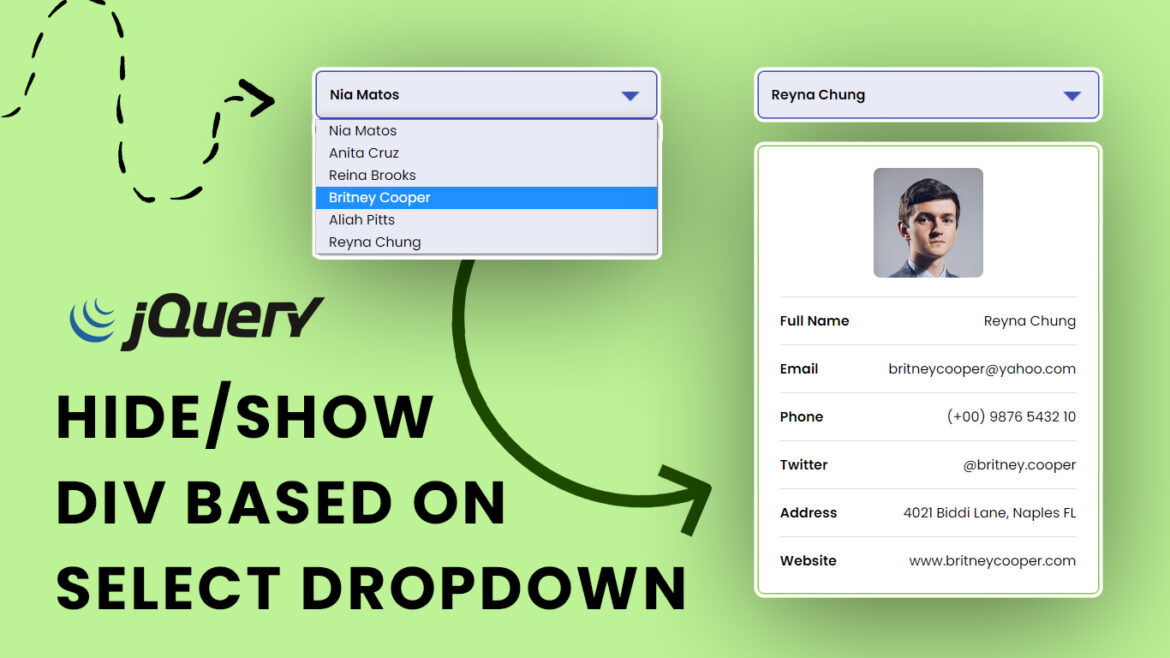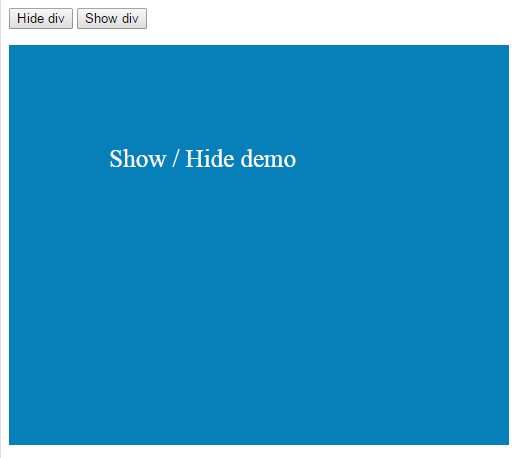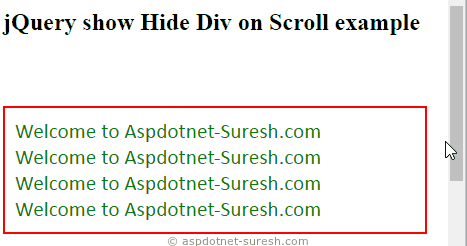
With just a few lines of code, you can create dynamic and interactive web pages that provide a better user experience. The toggle() function is a simple and effective solution for this task. Use the jQuery selectors to select, access the HTML element and apply the required operation. Now, if you want to show the hidden element, you can click the show button given above which reverses the effect of hide function. In conclusion, Jquery provides a convenient way to show and hide content on a web page based on user interaction. Click the hide button given above to see the hide effect of jQuery. In the click event of the button, I placed jQuery toggle method which is attached to a div element with id: toggletst.

Jquery showhide on click code#
Example 1: Create an HTML file and add the following code to it. As you click on the button Show/Hide if the div element was visible it will be hidden and vice versa. jQuery hide () method: This method is used for hiding the web elements. The Jquery code makes it easy to show and hide the div with a simple button click. In this example, I will use toggle jQuery method to show or hide a div element. The toggle () function is a simple and effective solution for this task. In conclusion, Jquery provides a convenient way to show and hide content on a web page based on user interaction. The very first step will be creating an HTML file and link the jQuery library file via CDN. We can use this method for various purposes on our webpage and get an efficient result. In this article, we will discuss one of them which is the hide () method. ('.more'). jQuery has a lot of handy methods to get the work done easily. I just when along with the fiddle but I think you wanted the more class to be hidden by default so you can add this line before the code above.

The jQuery Show/Hide Example can be customized to fit the specific. The component uses the jQuery show () and hide () methods to toggle the display of the selected element. When the button is clicked, the toggle() function will show the div if it is hidden, and hide it if it is visible. The Jquery code makes it easy to show and hide the div with a simple button click. When you click on the Contact Us, it will hide the more class and if its already hidden then it will make it visible. The Show/Hide component typically consists of a button or link that the user can click to toggle the visibility of a particular element, such as a menu, a form, or a message. The div is initially hidden by setting the display property to "none" in the style attribute of the div element. The toggle() function is used to show or hide the div with the id "div2".

The code inside the function sets up a click event for the button element using the. ready() function to execute the code when the page is fully loaded. In the head section of the HTML page, we first include the Jquery library and then add a script that uses the. The button will be used to toggle the visibility of the second div. The second version of the method accepts a Boolean parameter. A second click will show the element once again: Figure 2 - Illustration of the toggle() effect when showing the image. The first div contains some content and the second div is empty. With the element initially shown, we can hide it slowly with the first click: Figure 1 - Illustration of the toggle() effect when hiding the image. In this article, we'll go over the steps to show and hide divs on a button click with Jquery.įirst, let's create a simple HTML page with two divs and a button. With Jquery, a popular JavaScript library, this task becomes easier to accomplish. This could be achieved a lot easier using data attributes for example the "information" link and section could have the same data attribute and then you can simply search for a "page" with the same data attribute.Showing and hiding content on a web page can add interactivity and provide a better user experience.

Information Portfolio Blog Contact Me About Me Lorem ipsum information Portfolio Lorem ipsum portfolio Blog Lorem ipsum blog Contact Me Lorem ipsum contact


 0 kommentar(er)
0 kommentar(er)
